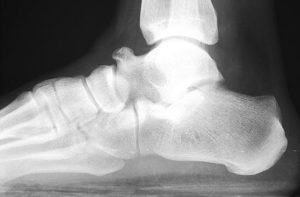
Tarsal coalition is a condition where two or more bones in the foot are abnormally fused together, resulting in limited mobility and pain. It is typically a congenital condition, meaning that it is present at birth, and it often becomes symptomatic during adolescence.
The most common type of tarsal coalition involves the calcaneus bone (heel bone) and the talus bone (bone between the heel bone and the ankle bone), but it can also occur between other bones in the foot.
Symptoms of tarsal coalition may include pain, stiffness, and limited range of motion in the affected foot, particularly during physical activity or standing for prolonged periods. In some cases, the affected foot may also appear to be flat or have a high arch.
Diagnosis of tarsal coalition may involve a physical exam, imaging tests such as X-rays or CT scans, and sometimes, bone scans or MRI.
Treatment for tarsal coalition may depend on the severity of the symptoms and the degree of fusion between the affected bones. Conservative treatment options may include rest, immobilisation with a cast or brace, physical therapy, and non-steroidal anti-inflammatory drugs (NSAIDs) to relieve pain and inflammation.
In more severe cases, surgery may be necessary to remove the abnormal bone or to fuse the affected bones together in a more functional position.
It is important to seek medical attention if you experience persistent foot pain or notice any unusual symptoms, as untreated tarsal coalition can lead to long-term complications such as chronic pain and arthritis.
